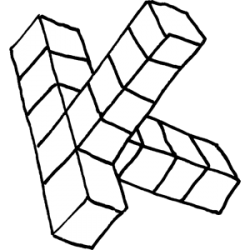Two approaches to making interactive documentary could be distinguished: Artivist and Explorartist Approach (and the space in between). I think these terms might be helpful for understanding generative systems and especially Korsakow. An artivist approach can also be realised with linear formats, but for an explorartist approach, both non-linear and generative formats are particularly suitable, generating a variety of perspectives on an equal footing. Korsakow, for example, is such a format. Korsakow is not only a format, it is also a tool, and so one must learn not only how to use it, but also how to “read” it. Only then can the potential of Korsakow to understand any object of study in a more multi-perspective way unfold.
This text comes from an introductory talk I gave in spring 2023 as part of a course at HSLU in which students make interactive documentaries using the Korsakow software.
We watched GELD.GR for 30 minutes last week at our first meeting (on May 2, 2023). 30 minutes was enough time to get to the pain point of GELD.GR. This was clearly and beautifully expressed in the discussion by a student who described how he could not have watched GELD.GR “just leaning back with a coffee”, with GELD.GR he had to “be there”, “be at the screen”, and use his own brain “actively” and thus differently than, for example, when watching “normal films”. With “normal films”, the main thing is to understand what the author wants to communicate through the work.
With GELD.GR, you have to use your brain “differently”, first to make decisions about which links to choose, but then especially to make sense of what you see. To bring the seemingly infinite perspectives together, as one student put it, to be able to see together and grasp together.
It was described as “new” and ” needing some getting used to”, not ” to consume” media in the usual way. One student remarked, “It’s cool, it challenges me”.
Adrian Miles calls this ‘taking getting used to’ thing “problem of ‘uncertainty'” (2014) and uncertainty is exhausting and demanding, often frustrating because you don’t know what to do with what you’ve been told, “because you’re not told what to think”, as an audience member at a Korsakow film show in Munich once put it.
In GELD.GR you are told much less about how to evaluate and classify what you see than you are used to in film media. One feels left alone (by the author?), left to one’s own devices. The multitude of perspectives presented in GELD.GR was also described by one student as “confusing”, similar to seeing different perspectives at the same time in a hall of mirrors at a fair.
One student said that you first have to settle into an unfamiliar role, an active role, a role where you are not someone who “just listens”, as he said, you have to be “active” and “explore”. And this raises the exciting question of what it does to thinking when the brain is more in a mode of exploring rather than listening? Is it easier to get into a mode of questioning given narratives? And how does one deal with this?
One student said that dealing with GELD.GR was a “completely different way of interacting with a film”, that it was just “a different way” and that it was “exciting” and “something new” in this different way.
The student said “I watched it for half an hour and then I had to get up and walk for a bit”, he realised “ok, that was work for me now and I am not used to that from film”. Film he would normally “just analyse” that’s how he put it.
This description reminds me of what Adrien Miles said when he was interviewed by Franziska Weidle for her doctoral thesis about how he watches Korsakov films. He described how he takes in these kinds of open-ended Korsakow films in bits and pieces. Ideally, a few minutes every day, and then turn back to other activities. Some might describe this phenomenon as a lack of attention, an “attention deficit” on the part of the viewer, or a fault of the film being so boring that it cannot hold the viewer’s attention. However, I see it differently.
As far as the viewer is concerned: it takes an enormous amount of attention on the part of the viewer to look at complex themes piece by piece with a time span long enough to allow the subconscious to get involved in the thought process, to reflect, to think. There are scientists who assume that conscious thinking is largely shaped by the unconscious, according to psychologist Paul Bloom (cf. Sam Harris #317 – What do we know about our minds, Conversation with Paul Bloom).
Unconscious is the largest part of the nervous system, the system with which living beings grasp and process the world. Conscious thought, according to Bloom, is only the smallest part of it.
As for the film: it seems to me to be a feature and not a bug that Korsakow does not create an engaging and addictive potential that keeps the viewer engaged and instead allows them to divert attention with other things to give the subconscious time to engage.
One of the students calls a Korsakov film “a metaphor of reality as it really is”, in which you can never know everything, you always need pauses to reflect.
We talked about GELD.GR, which is a way of making Korsakov films. It is my way of making Korsakov films and there is another way.
This other way can be described as an “artivist approach”, a term used by interactive documentary filmmaker Marta Fiolić to describe her approach to making her work.
“Artivist” is a combination of “artist” and “activist” and describes the process of making as motivated by a concrete agenda, starting from a problem to be pointed out and for which one wants to offer solutions. The film or project has an agenda that can be more or less named at the beginning of the process.
In line with Marta Fiolić’s “Artivist Approach”, I would describe the approach of GELD.GR and almost all my projects with the term “Explorartist Approach”, composed of the words “explorer” and “artist”. As a true explorer, you don’t know what you’re going to find – and so you can’t pursue an agenda.
Summary:
There are two approaches to making Interactive Documentaries with Korsakow. These approaches can be named “artivist” and “explorartist approach”.
Interactive documentaries generally tend to be arduous because they require a different way of thinking. Interactive documentaries that take an exploratrist approach are particularly disappointing for users who approach the Interactive Documentary with an expectation of not only being shown something, but also being told how to classify it.
The strength of an Interactive Documentary is generally the openness with which one can approach a topic, this openness is greater with the Explorartist approach than with the Artivist approach, the price to be paid for this at present is that one thereby unsettles an audience that has been shaped by cinematic narration.
Therefore, I recommend the Explorartist approach to those who are interested in changing their minds, both to those who make such a project and to those who watch it.
For those who want to pass on an opinion (usually their own) to others, I recommend the Artivist Approach, but I am not sure if it makes sense to go interactive at all, since the interactive, on the one hand, as described, makes the consumption of the finished project exhausting and, on the other hand, puts the viewer into a mode of questioning which can also be directed against the agenda or the message of the film.
I would like to put it this way:
Although it is possible to construct artivist projects (i.e. those with a clear stance) with the Korsakow tool, such projects are in a sense not Korsakowian in the sense in which Korsakow was originally conceived. From the beginning, the development of Korsakow was an attempt to create an instrument that suggests, instead of using the tool to tell the world, to understand the world more multiperspectively through the tool.
Korsakow is not a tool to tell the world, but to let the world speak (at least more) for itself. However, in order to understand what the world is telling you through this tool, you must first learn to “read” how the world is communicating through the tool.
Someone who has not learned to read through an instrument cannot do anything with the instrument. Just as someone who has not learned to read a clock cannot really do anything with a clock (except perhaps finding it pretty, like a piece of jewellery).
The very first step in learning how an instrument works is first of all to look and recognise the tool as such in the first place. Then, to use the tool yourself and learn how to use it. And only then can one learn how to grasp the world differently and possibly better through the tool, just as I recently observed a craftsman using a hammer to determine through the tool what kind of stones a wall was made of.

